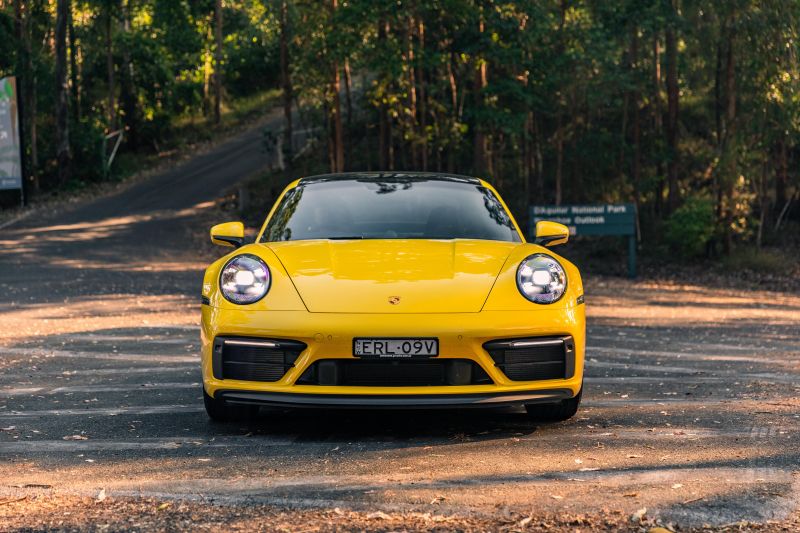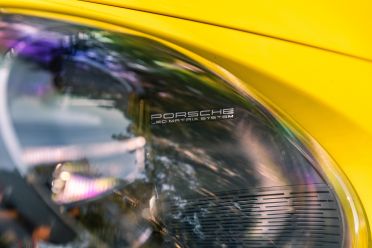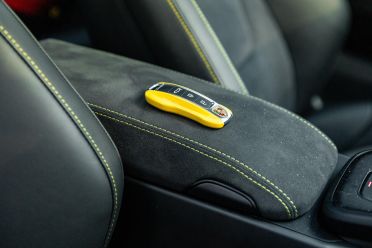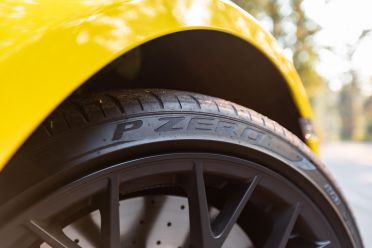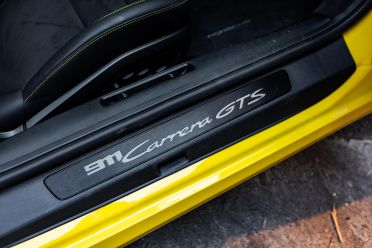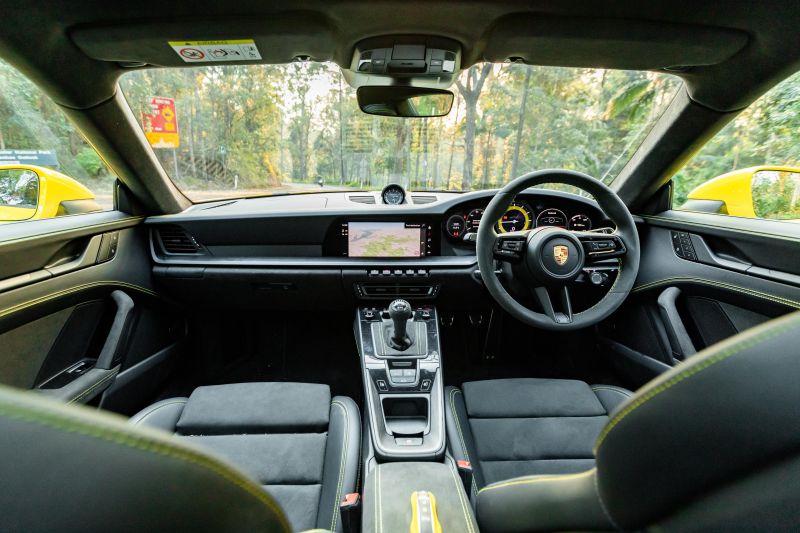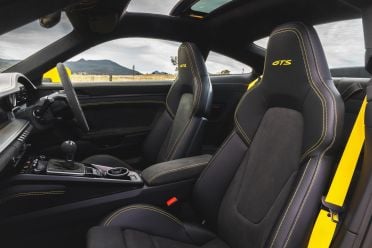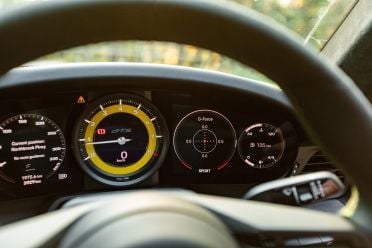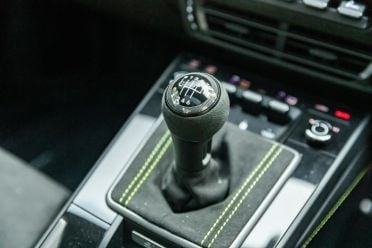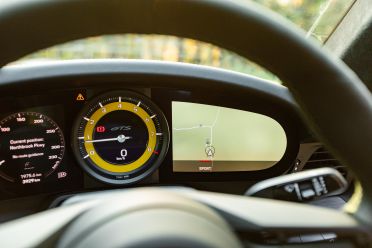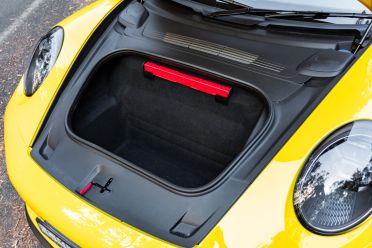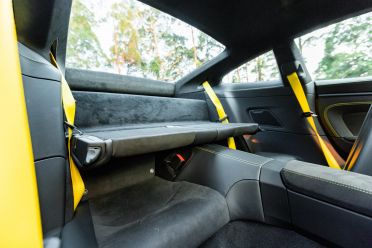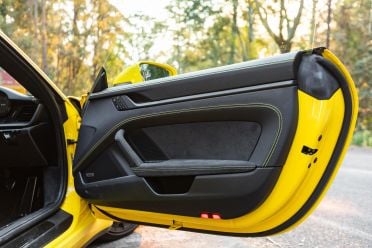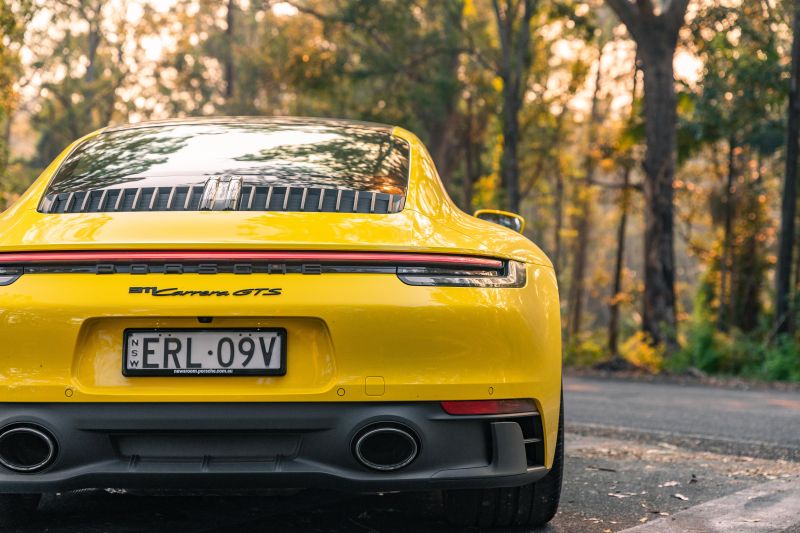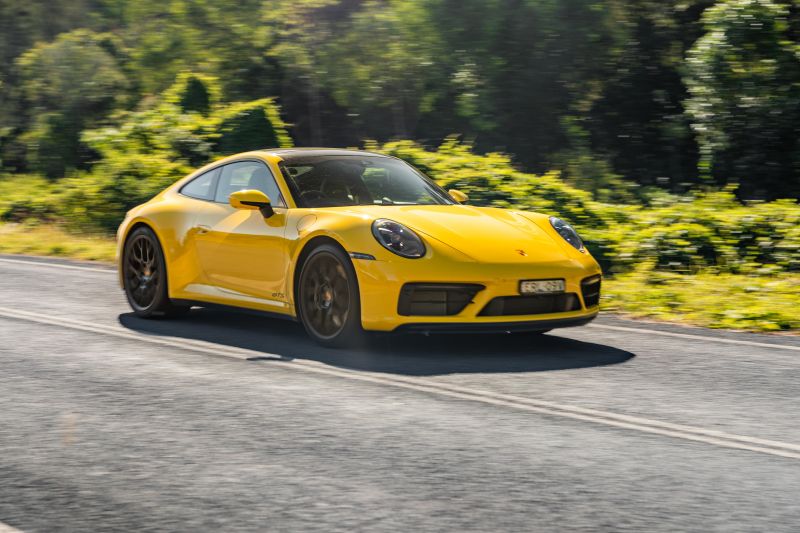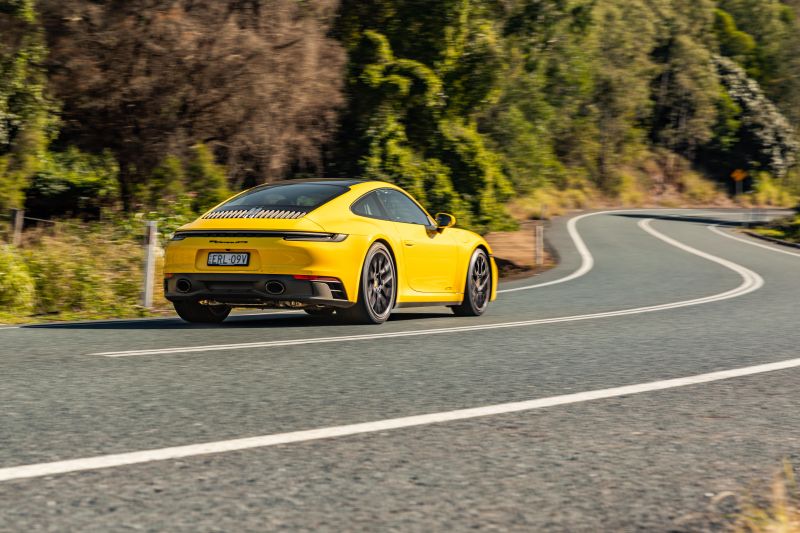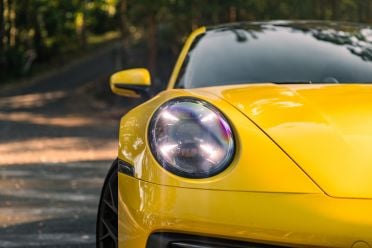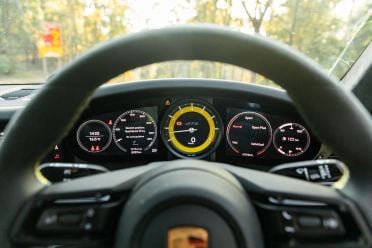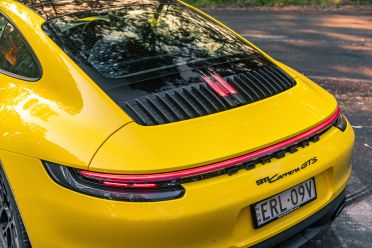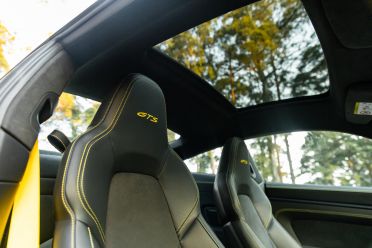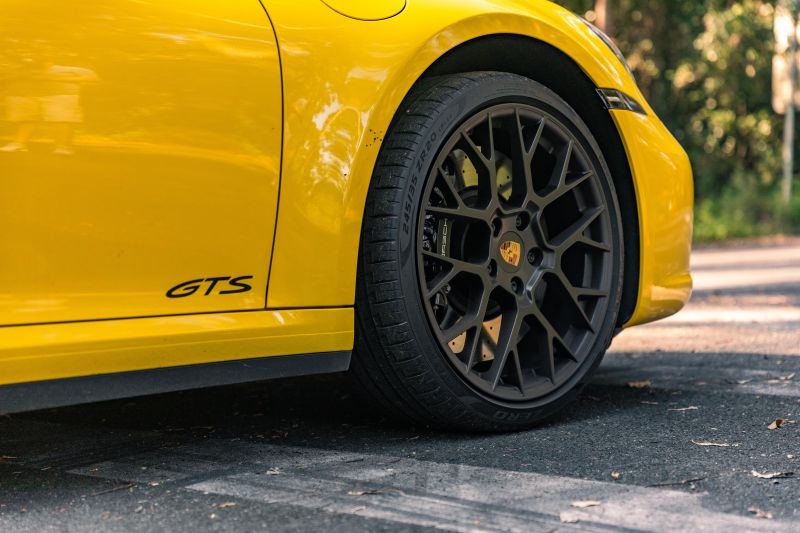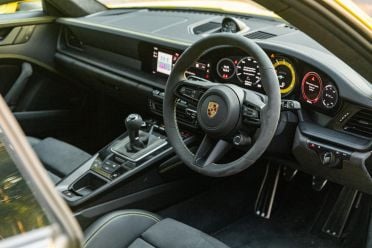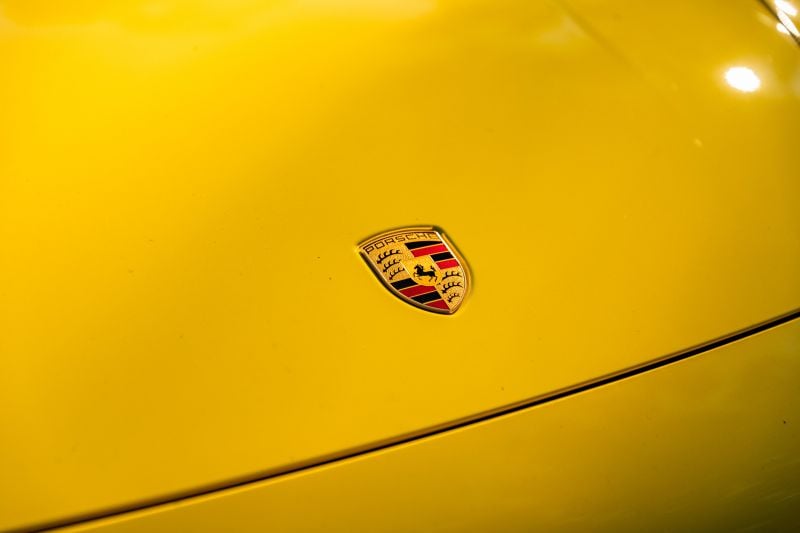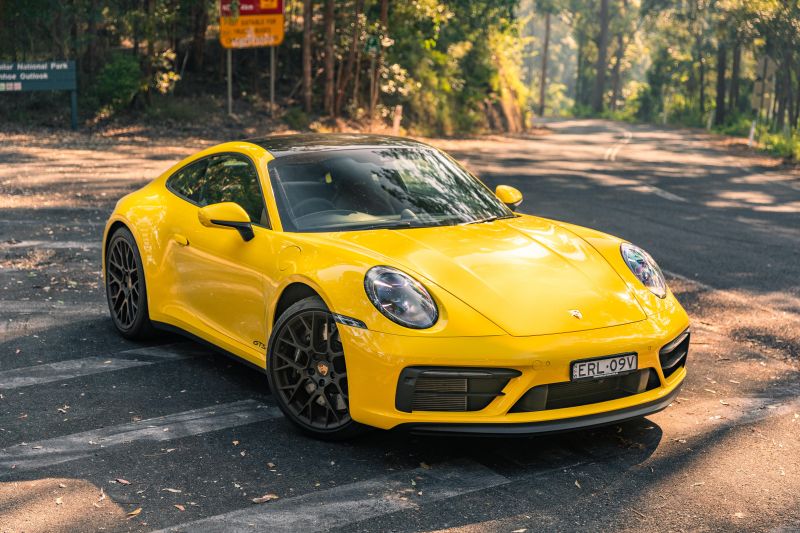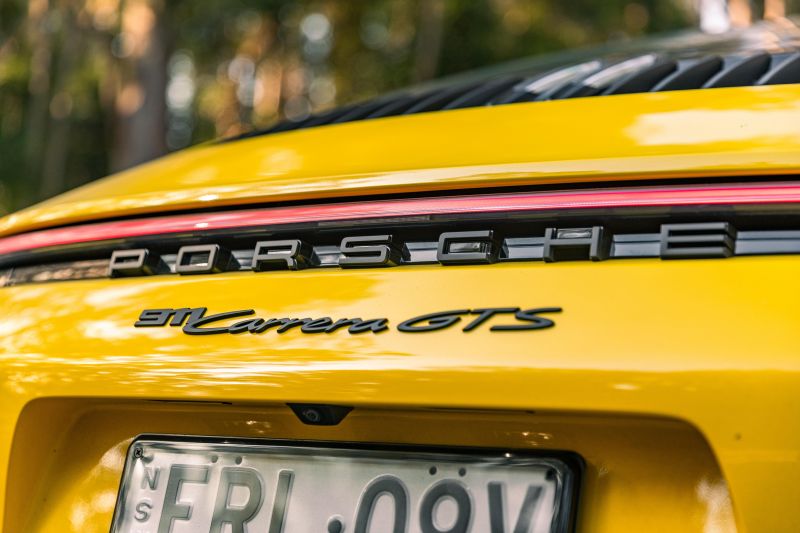There are a certain type of people that are drawn to the Porsche 911 Carrera GTS.
It’s the sort of car you would consider buying if you want either a 911 Turbo or a 911 GT3 but can’t commit or stretch to either, and want an equally appealing badge that has no equal.
No matter how you look at it, the new Porsche 911 GTS is hard car to beat for the price and what it offers as the ideal performance variant in the road-focused 911 range.
Most importantly, if you happen to get it in a manual, it’s also perhaps one of the most enjoyable of the modern-day analogue cars money can buy.
Having tested and reviewed all previous generations of the 911 GTS, we had a pretty good idea what to expect and although the GTS has always been a superb package and driver’s car (specially the naturally-aspirated 991.1), our expectations with the new model were still set pretty high.
We drove the new 911 GTS in rear-wheel and all-wheel drive format with a manual and dual-clutch PDK gearbox around Norwell’s racetrack and also through the twisty mountain roads of Brisbane’s Mount Nebo and Glorious and after a week with the car, we can reassure you that the 12 month or so wait list is worth it.
But the decision to pick the right GTS for you is harder than you might think.
How much does the Porsche 911 Carrera GTS cost?
There are five variants of the GTS with the standard RWD coupe available in both the seven-speed manual or the eight-speed PDK. The all-wheel drive (4 GTS), Cabriolet and Targa models are only available as a PDK, unfortunately.
2022 Porsche 911 Carrera GTS pricing
- Porsche 911 GTS Coupe: $314,800
- Porsche 911 4 GTS Coupe: $334,000
- Porsche 911 GTS Cabriolet: $347,700
- Porsche 911 4 GTS Cabriolet: $366,900
- Porsche 911 4 GTS Targa: $366,900
Our primary test car was a manual rear-wheel drive GTS Coupe packed with the following options:
- Race-Tex interior package, with extensive items in leather, Black: $8,350
- Porsche Dynamic Chassis Control (PDCC): $6,750
- Interior trim package with decorative stitching in contrasting colour Porsche Exclusive Manufaktur: $6,500
- Adaptive sports seats Plus (18-way, electric) with memory package: $5,910
- Lifting system front axle: $5,070
- Rear-axle steering $4,720 Electric slide/tilt glass sunroof: $4,720
- Tinted LED Matrix main headlights incl. Porsche Dynamic Light System Plus (PDLS Plus) Porsche Exclusive Manufaktur: $4,020
- Roof lining in Race-Tex: $2,440
- Porsche Design Sub-second clock Porsche Exclusive Manufaktur: $2,110
- Brake calipers painted in Black (high-gloss) Porsche Exclusive Manufaktur: $1,720
- Light design package: $1,050
- Seat belts in Racing Yellow Porsche Exclusive Manufaktur: $930
- Sun visors in Race-Tex Porsche Exclusive Manufaktur: $860
- Vehicle key painted in exterior colour with key pouch in leather Porsche Exclusive Manufaktur: $780
- Tachometer dial in Racing Yellow Porsche Exclusive Manufaktur: $720
- ‘PORSCHE’ logo LED door courtesy lights Porsche Exclusive Manufaktur: $300
All up, the final price for the vehicle you see here is $371,750 before on-road costs.
What is the Porsche 911 Carrera GTS like on the inside?
The GTS range is best known for lots of black. From the bodywork highlights outside to the wheels, to the interior… GTS is the new black.
The 922-generation 911 has by far the best interior of any that has come before. It’s a well-thought-out cabin that allows for a near-perfect driving position while also providing all the key requirements of the driver within easy reach.
Jumping inside, it’s pretty easy to tell this apart from the lesser 911 models. Apart from the embroidered black GTS script on the front-seat headrests, the GTS models add inlays of brushed and black anodised aluminium on the centre console, the door panel and sill guards as well as the trim strips on the dashboard.
Like other GTS models in the market today, the standard-fitment Race-Tex interior package brings further black touch points to the 911’s steering wheel rim, gear lever, centre console storage compartment lid (partially) as well as the seat inserts (front and rear), door handles and armrests.
We didn’t get a chance to test the standard seats (Porsche calls them Sports Seats Plus) as our cars had the optional Adaptive Sports Seats Plus (18-way, electric) which were surprisingly supportive and comfortable both on track and for daily use.
As for the infotainment system, the 911 GTS comes standard with the company’s sixth-generation Porsche Communication Management, known as PCM 6.0. It’s fast to load and use and the 10.9-inch touch screen is crystal clear. We love the seamless integration of wireless Apple CarPlay and don’t mind the BOSE sound system.
The rear seats themselves are, well, useless. They are best used for kids under seven and even then, not for long drives.
You can, perhaps, fit a small adult in the back if the front passenger is willing to forgo blood flow to the lower part of their legs for the journey. We found it impossible to have an adult sit behind the driver’s seat and find a safe driving position.
If you want to delete the rear seats and go over the top and give your GTS that GT3 touch, you can always option up the carbon-fibre reinforced plastic (CFRP) full bucket seats that have a gorgeous carbon-weave finish.
There’s 132L of luggage space at the front, which although sounds small, is actually shaped very logically with a deep rectangular shape that will easily fit couple of soft overnight bags.
What’s under the bonnet?
The 3.0-litre bi-turbo flat-six is the staple of the majority of the 911 range bar the GT3/RS and Turbo.
It’s in its most powerful guise in the GTS, with 353kW of power and 570Nm of torque, giving it 22kW and 40Nm more than the Carrera S. It breathes through a sports exhaust as standard.
It comes with the Sport Chrono Package as standard (which is unusual for Porsches going back a generation) and has a 64L fuel tank that will see it sip 98 RON fuel somewhere between 10.1L/100km (coupe RWD PDK) and 10.7L/100km for the manual.
The fastest variant is the Carrera 4 GTS PDK, which will do the 0-100km/h in 3.3 seconds. The slowest is the manual rear-wheel drive that does the same run in 4.1 seconds (3.4 seconds with PDK). The all-wheel drive Cabriolet and Targa quote 3.5s (PDK), while the rear-wheel drive Cabriolet claims 3.6s (PDK).
Despite being the slowest, the manual RWD GTS Coupe is the lightest at 1510kg, with AWD adding a further 50kg. Chop the roof off and the underbody strengthening will set you back another 70kg. The Targa is the heaviest at 1685kg.
The difference between the PDK in the GTS and lesser models is a new oil pump with better oil pressure regulation that also takes lower-friction oils. Porsche has also uprated the dual mass flywheel over the Carrera S to deal with the higher torque output.
How does the Porsche 911 Carrera GTS drive?
We drove the rear-wheel drive manual and all-wheel drive GTS Coupe, with the Cabriolet and Targa models yet to arrive in Australia.
The all-wheel drive Carrera 4 GTS with the eight-speed PDK is the fastest of the five variants and it definitely feels it. On track the car was chasing a GT3 being driven by a pro and it kept up with relative ease, while the manual RWD struggled a fair bit giving chase.
We like the all-wheel drive, it feels more stable out of corners and is definitely quicker off the line, but we’re not sure it’s worth the extra $20,000 and since it doesn’t come in a manual, we are really drawn to the base coupe. Don’t get us wrong, the PDK gearbox is utterly faultless as usual.
With 570Nm of torque on tap, the GTS moves at rapid pace – 0-100km/h in 3.3 seconds (4 GTS) is proper supercar fast – but it’s the rolling 60-100 run that feels utterly ballistic. It has so much mid-gear pull you really have to wonder why you need the Turbo?
Just remember the naturally-aspirated 991.1 GTS (which we love), only had 440Nm of torque, the difference between that screaming naturally-aspirated generation and the latest turbo monster is monumental. The 992 911 GTS has only 30Nm less torque than a RWD V10 Lamborghini Huracan, and that’s saying something.
So if you absolutely want a PDK, you will not be disappointed as there is no better dual-clutch gearbox in the market. But we can assure you without a shadow of a doubt, you will be disappointed that you didn’t pick the world’s second-best manual gearbox (the first being the six-speed in the 911 GT3).
The manual is the highlight of the 911 GTS (and GT3). Apart from, perhaps, the AMR Aston Martin Vantage (which has a very ordinary dog-leg manual gearbox) the 911’s option of a manual is super unique in this segment and as far as driving feel goes, it’s the best in market.
Compared to the previous-generation, the 992 has a shorter shift action and the gear lever is 10 millimetres shorter than before, and it feels superb in your hand.
For whatever reason, we initially thought the manual wouldn’t live up to the PDK in terms of the overall experience, but it takes about 20 minutes of driving to realise you would happily sacrifice 0.7 seconds to 100km/h to shift gears yourself.
After a solid week, we didn’t want to give it back. Although it has seven gears, you only need six in Australia.
The last gear is definitely for the autobahn and doesn’t feel comfortable at 110km/h. The six that you will use are very well spaced out, unlike say, a GT4 which has really long ratios for its torque range.
The one annoying aspect is that rev-matching only works in Sport and Sport Plus, with the GTS starting each and every time in Normal mode, which means you will be shifting the driving mode switch as part of your startup process.
Gearbox aside, the steering is our second-favourite feature of the GTS. The directness and the way it communicates the feeling of the front-wheel through the wheel is as close to a GT3 as you will get on a road car.
Just imagine driving an old-school lightweight sports car with insane acceleration and you can start to imagine what the GTS feels like. It’s a genuine best of both worlds (a mix of GT3 and Turbo) and it makes the best daily as well.
The ride is typical Porsche, it somehow blends excellent road compliance with limited body roll. It doesn’t feel as tight or as controlled as a GT3 mid-corner but then again, it feels far more comfortable when stuck in traffic.
Gearbox, steering and ride are all excellent, but something has to be wrong with the GTS, right? We thought so too, we thought, surely it wouldn’t sound good – but it does!
The crackles and burble are actually really satisfying. We were surprised by how the folks in Stuttgart have managed to extract a very decent soundtrack from an engine constrained by so many emission laws.
Another little feature that we liked is the front-lift system (which really shouldn’t cost $5k). It works really well and keeps the nose up until 60km/h. It also has this super neat feature of allowing you to save the location of where you asked for the nose to lift – meaning, for example, if you frequent a shop entrance that requires the nose up, it will do it automatically using GPS data.
Overall, the driving dynamics of the 911 Carrera GTS – especially in manual form – somehow blend perfect daily driving characteristics with supercar performance. You would really want to have that Turbo badge for the sake of it to spend the extra $90,000.
What do you get?
The GTS sits above the Carrera S and below the Turbo. As such it blends features from both and plenty unique to itself.
In terms of colours, flat options like Black, White, Guards Red and Racing Yellow are available while metallic finishes like Carrara White Metallic, Jet Black Metallic and others can be added for no extra cost.
From the outside, the GTS is recognisable thanks to its satin black front spoiler lip, centre-lock alloy wheels, GTS script on the doors and rear and the rear lid grille slats.
As is the GTS theme, the twin tailpipes of the exhaust system are painted in high-gloss black stainless steel as part of the SportDesign package, which also has its own unique satin black trims applied to both the front and rear including the tinted LED main headlights and the edging of the daytime running lights.
There are 12 paint colour choices (four solid colours and eight metallic colours) available with the new 911 GTS.
Standard forged alloy wheels come from the Turbo S (245/35 R20 front, 305/30 R21 rear) and are painted in satin black with central locking.
They are attached to a brake system borrowed from the Turbo. The front has massive 408mm diameter discs (38mm thickness) and six-piston aluminium monobloc fixed red calipers, while the rear still comes with four-piston fixed calipers grabbing 380mm diameter discs (30mm thickness).
Other standard features for the Australian GTS models include:
- Power steering Plus
- Steering wheel heating
- Comfort Access
- Seat heating (front)
- Windscreen with Grey top tint
- Automatically dimming interior and exterior mirrors
- Rain-sensing wipers
- Electrically-folding exterior mirrors
- Park Assist including Surround View
- Lane Change Assist
- Bose Surround Sound system
- DAB+ digital radio
- Tyre fit set
- Metallic paint
Some options we recommend include Porsche Dynamic Chassis Control (PDCC $6750), rear-axle steering ($4720) and the front axle lift function ($5070).
Is the Porsche 911 Carrera GTS safe?
Porsche doesn’t crash test its sports cars, which includes the entire 911 model range, so there’s no ANCAP safety rating here.
Standard safety equipment includes driver and front passenger airbags, a thorax airbag built into the side bolster of each front seat.
How much does the Porsche 911 Carrera GTS cost to run?
The GTS has a three-year/unlimited-kilometre warranty with one-year or 15,000-kilometre service intervals.
Servicing costs run from $695 to $1450 depending on requirements, which is incredibly cheap compared to the more exotic options available.
CarExpert’s Take on the Porsche 911 Carrera GTS
At the end of the day, any Porsche 911 Carrera is a treat.
The base model has its perks, the Turbo S is a monster and everything in between is something for someone.
The fact the GTS is the only turbocharged Porsche 911 you can buy with a manual makes it super attractive to the right buyer that doesn’t really want a GT3 and can’t justify the step-up to the Turbo.
The PDK is also excellent, but seriously, do yourself a favour and order it with the manual gearbox and live life with a big giant smile on your face.
Click the images for the full gallery
MORE: Everything Porsche 911






